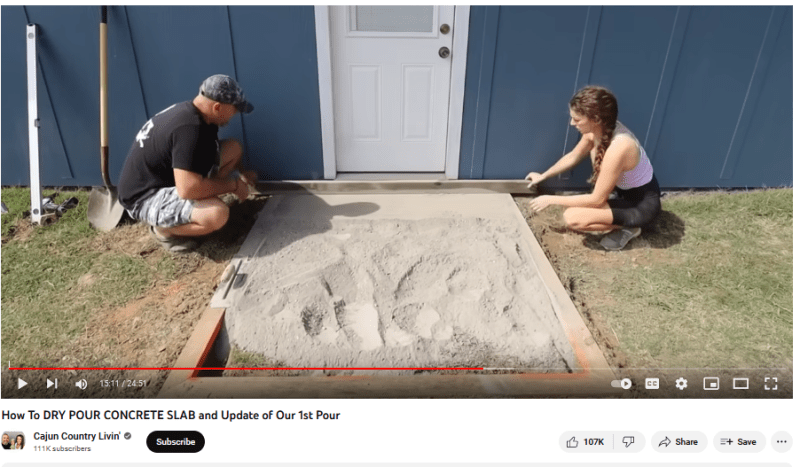port125
Civil/Environmental
- Jan 15, 2009
- 64
Something I have never seen before.
My you tube recommended me a video on a method to dry-pour concrete.
Basically screed off bagged concrete and water with a garden-hose.
One video is for a slab for a chicken coop - OK no load I get it.
But searching similar videos start they escalate up until they are putting structures on these slabs. That makes me nervous
Similar videos Tens of millions of views.
Promoting this seems reckless. I would think the best case is it holds up a couple/few years and needs replaced.
How would this hold up? Would it hold up? Has anyone actually specified or allowed this technique?

.
My you tube recommended me a video on a method to dry-pour concrete.
Basically screed off bagged concrete and water with a garden-hose.
One video is for a slab for a chicken coop - OK no load I get it.
But searching similar videos start they escalate up until they are putting structures on these slabs. That makes me nervous
Similar videos Tens of millions of views.
Promoting this seems reckless. I would think the best case is it holds up a couple/few years and needs replaced.
How would this hold up? Would it hold up? Has anyone actually specified or allowed this technique?

.

![[tongue] [tongue] [tongue]](/data/assets/smilies/tongue.gif)
![[banghead] [banghead] [banghead]](/data/assets/smilies/banghead.gif)